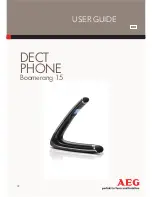
A-1
Cisco Unified Wireless IP Phone 7921G Administration Guide for Cisco Unified Communications Manager Release 7.0
OL-15985-01
A P P E N D I X
A
Providing Information to Users By Using a
Website
If you are a system administrator, you are likely the primary source of information for Cisco Unified IP
Phone users in your network or company. It is important to provide current and thorough information to
end users.
To successfully use some features on the Cisco Unified Wireless IP Phone 7921G (such as speed dial
numbers and voice messaging system options), users must receive information from you or your network
team or be able to contact you for assistance.
Cisco recommends that you create a web page on your internal support site that provides end users with
important information about their new Cisco Unified Wireless IP Phone 7921G.
Consider adding the following types of information to this site:
•
How the Cisco Unified Wireless IP Phone Operates, page A-1
•
How Users Access the Help System on the Phone, page A-3
•
How Users Get Copies of Cisco Unified IP Phone Manuals, page A-3
•
How Users Configure Phone Features and Services, page A-4
•
How Users Access Voice Messages, page A-4
How the Cisco Unified Wireless IP Phone Operates
Users need to know that their Cisco Unified Wireless IP Phone 7921G operates more like a mobile
phone than like their desktop phone. Small wireless phones with an antenna allow users to move around
a facility while staying connected to a call. These phones, like mobile phones, can approach the edge of
the RF signal range and experience static or poor voice quality. At times, the user might encounter areas
where there is no signal and lose the call entirely. The following is a list of calling locations and
situations in which wireless phones might experience audio problems:
•
Stairwells, elevators, rooms with metal equipment such as file cabinets, or heavy machinery.
•
Break rooms with microwave ovens, or labs with equipment that emits RF signals within the same
ranges.
•
Conference rooms or other congested areas where many people are using wireless devices.
•
Parking garages and outdoor areas where access points are not located or out of range.
















































